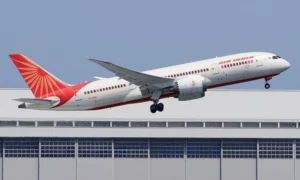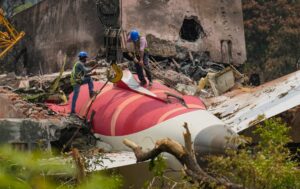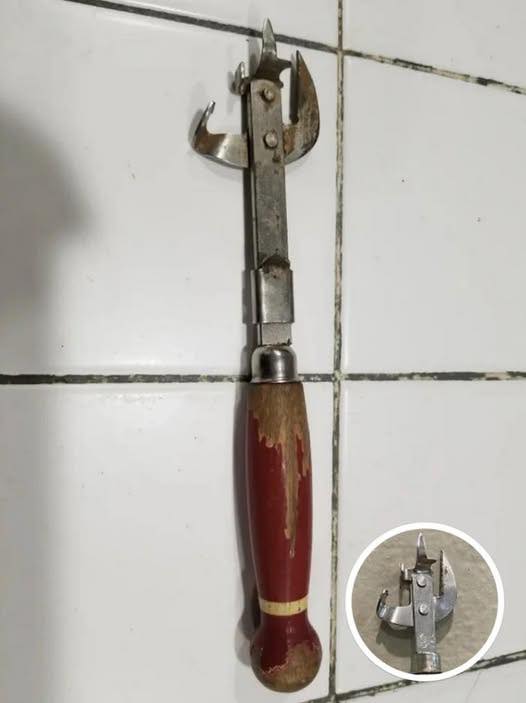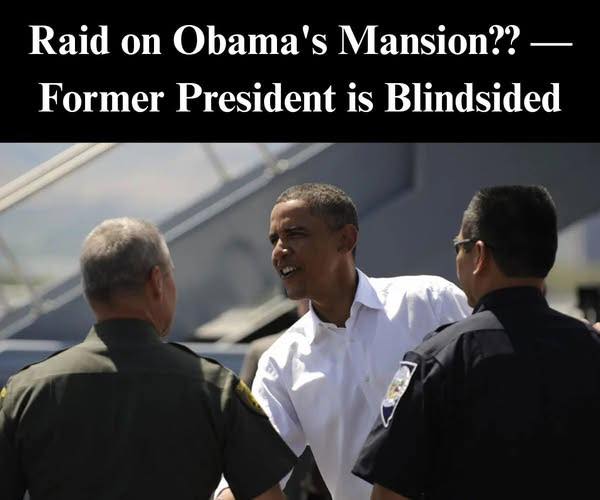CLASSIFIED EVIDENCE: Air India 171’s final meal service contained a handwritten note hidden under the bread roll — the handwriting matches someone in the cockpit
CLASSIFIED EVIDENCE: Handwritten Note Found Under Bread Roll in Air India 171’s Final Meal Service Matches Cockpit Crew Handwriting
The tragic crash of Air India Flight 171 on June 12, 2025, which claimed 241 of 242 passengers and crew and 19 lives on the ground, continues to unravel with unsettling discoveries. The Boeing 787-8 Dreamliner, en route from Ahmedabad to London Gatwick, crashed 32 seconds after takeoff, with investigators pointing to the mysterious movement of fuel control switches to the “CUTOFF” position as the cause of the dual engine failure. Now, a classified piece of evidence has emerged: a handwritten note, hidden under a bread roll in the final meal service, bears handwriting that matches a member of the cockpit crew, raising chilling questions about the events leading to the disaster.

The Note’s Discovery
On July 28, 2025, during the meticulous examination of wreckage at the crash site near B.J. Medical College in Ahmedabad, investigators recovered remnants of the in-flight meal service prepared for the business class cabin. Among the debris, a folded piece of paper was found tucked beneath a partially intact bread roll in a meal tray. The note, written in blue ink on a torn piece of Air India stationery, contained a cryptic message: “It ends now. No more.” The paper, though singed, was legible enough for forensic analysis, which revealed that the handwriting matches samples from one of the two pilots—Captain Sumeet Sabharwal or First Officer Clive Kunder—though the Aircraft Accident Investigation Bureau (AAIB) has not publicly identified which one.
The meal tray was located near the forward galley, suggesting it was part of the initial service prepared before takeoff, as the flight’s brevity—32 seconds airborne—precluded any in-flight distribution. The note’s placement under the bread roll indicates it was deliberately hidden, possibly intended for a specific recipient, though no such recipient has been identified. The AAIB, in collaboration with India’s Central Forensic Science Laboratory, used graphological analysis to confirm the handwriting match, cross-referencing it with crew logbooks and pre-flight documentation signed by Sabharwal and Kunder.
Implications for the Investigation
The note’s discovery, detailed in a classified AAIB memo leaked to select media outlets, has intensified scrutiny of the cockpit crew’s actions. The preliminary report, released on July 8, 2025, highlighted the fuel control switches moving to “CUTOFF” at 08:08:42 UTC, just three seconds after the aircraft reached its maximum airspeed of 180 knots. Cockpit voice recordings captured one pilot asking, “Why did you cut off?” with the other responding, “I didn’t,” suggesting confusion or disagreement in the cockpit. The note’s cryptic message—“It ends now. No more”—raises the possibility of intentional action, though investigators caution against premature conclusions.
Captain Sabharwal, 56, had 15,638 flight hours, including 8,596 on the Boeing 787, while First Officer Kunder, 32, had 3,403 hours, with 1,128 on the 787. Both passed pre-flight breathalyzer tests and were deemed fit to fly after adequate rest, according to the AAIB report. The note’s handwriting match complicates the narrative, as it suggests one pilot may have left a message with deliberate intent. However, the lack of a full cockpit voice recorder (CVR) transcript, withheld in the preliminary report, leaves critical context missing. The Indian Commercial Pilots’ Association has condemned speculation about pilot suicide as “reckless,” urging focus on technical factors like the 2018 FAA bulletin on disengaged fuel switch locks, which Air India did not address with inspections.
Theories Surrounding the Note

Intentional Act: The message’s tone suggests finality, leading some to speculate it reflects a deliberate decision by one pilot to end the flight, possibly tied to the fuel switch cutoff. The handwriting match strengthens this theory, though no motive—personal, psychological, or otherwise—has been established for either pilot. The AAIB is reportedly consulting aviation psychologists to assess the crew’s mental state, but no red flags have surfaced from their records.
Crew Miscommunication: The note could indicate a misunderstanding or conflict between Sabharwal and Kunder. If one pilot wrote it as a private expression of frustration or intent, its placement in the meal service suggests an attempt to conceal it from the other. The cockpit audio, with one pilot denying responsibility for the cutoff, aligns with this possibility, though it does not explain the note’s purpose or recipient.
External Involvement: Some online theories, particularly on X under hashtags like #AI171Note and #CockpitMystery, propose the note was planted by a third party—possibly a crew member or ground staff—to create confusion or deflect blame. However, the handwriting match to a cockpit crew member undermines this, as access to the meal tray before takeoff was restricted to the cabin crew and catering staff.
Coincidence or Misinterpretation: The note might be unrelated to the crash, perhaps written during a prior flight or as a personal memo. However, its placement under a bread roll and the timing of its discovery make this less likely. Forensic analysis confirmed the ink and paper were consistent with materials available on the aircraft, ruling out pre-crash tampering.
Connection to Other Discoveries
The note adds to a series of perplexing findings from Flight 171. A passenger’s phone, recovered intact, contained a sunset photo with a shadowy figure, while sealed envelopes with identical key-like pendants were delivered to victims’ families. A child’s drawing, depicting the plane breaking apart, matched radar data with eerie accuracy. The note’s discovery ties into these mysteries, particularly as its message echoes the finality of the child’s drawing and the pendants’ cryptic symbolism. Families, like Imtiyaz Ali Syed, who lost four relatives, are demanding transparency, with many linking the note to the pendants as evidence of a coordinated message or cover-up.
The AAIB is investigating whether the note relates to the cockpit camera footage, revealed on June 27, 2025, showing First Officer Kunder’s hand gesture, possibly linked to a faulty seat mechanism that reduced throttle. The note’s handwriting match to a cockpit crew member suggests it could provide context for Kunder’s actions or Sabharwal’s monitoring role, though the footage does not show either pilot writing or handling the note.
Families and Public Reaction
The note’s existence, though classified, has leaked to the public, fueling outrage and grief. Sameer Rafik, cousin of victim Faizan Rafik, told Reuters, “First a photo, then pendants, a drawing, and now this note? It feels like someone is toying with us.” Families of the 53 British victims are working with law firms to demand the release of the CVR transcript and cockpit footage, citing the note as evidence of withheld information. The Tata Group, Air India’s parent, has reiterated its commitment to the AI-171 Memorial and Welfare Trust, offering ₹1 crore per victim, but families like Anil Ambalal Patel’s reject compensation in favor of answers.
On X, posts speculate wildly, with some claiming the note proves sabotage, while others see it as a tragic plea from a pilot under duress. The Indian Commercial Pilots’ Association and the NTSB have called for restraint, warning that leaks like the note’s discovery risk distorting the investigation.
Investigation Challenges and Next Steps

The AAIB, supported by the NTSB, Boeing, and GE Aerospace, is prioritizing the fuel switch anomaly but has incorporated the note into its human factors analysis. The handwriting match, confirmed through advanced graphology, is being kept under wraps to avoid further speculation, but the leak has complicated efforts. The investigation is also examining the aircraft’s maintenance history, as the 2018 FAA bulletin noted disengaged fuel switch locks on similar Boeing models, a concern Air India did not address.
The note’s placement in the meal service raises logistical questions: How did a pilot’s note end up in a galley tray? Was it written before or during the flight? The AAIB is interviewing catering staff and reviewing security footage from Ahmedabad airport, though the flight’s brevity limits the timeline. The final report, expected by July 2026, will likely address the note’s significance, alongside the cockpit footage, pendants, and child’s drawing.
Conclusion
The handwritten note found under a bread roll in Air India Flight 171’s final meal service, matching a cockpit crew member’s handwriting, is a haunting addition to the crash’s mysteries. Its cryptic message, combined with the fuel switch cutoff, a child’s prescient drawing, mysterious pendants, and a shadowy photo, paints a complex picture of a tragedy that defies simple explanation. As families demand answers and investigators navigate leaks and speculation, the note underscores the human element at the heart of Flight 171’s final moments—a message hidden in plain sight, yet shrouded in enigma.






